Trimming goat hooves is an essential part of goat care. Hooves that are too long place stress on pasterns and knees and as they grow the hoof walls can begin to capture soil and manure, increasing the risk of infections and hoof rot. While there are different tools you can use to trim goat hooves, a pair of hand-held hoof clippers and a little time is all you need to keep your goat’s hooves (and legs) in tip-top shape. In this tutorial, I will guide you through the process of trimming goat hooves. If you are purchasing goats from us, rest assured that in addition to this article, we always take the time to go over hoof-trimming with you in person when you come to pick up your goats.
What You’ll Need:
Hoof clippers/trimmers
Hoof pick (optional)
Styptic powder, quik stop or cornstarch (in case of bleeding)
Collar and leash or stanchion
Assistant (optional)
Step 1: Restraining Your Goat
Goats aren’t very big fans of manicures, pedicures, or any other reason you might need to touch their hooves, so you’ll need to restrain your goat in order to be able to easily access its hooves for trimming. There are several ways to do this; but the most comfortable solution (for you) will probably be a stanchion, so that the goat is both restrained and elevated and its hooves are easier to reach. With a stanchion, you can maintain your goat’s hooves without an assistant. Another option is to use a harness with a lift. Yet another is to tie your goat securely to a fence post or gate – I’ll do this for large bucks whose necks don’t quite fit in our milking stanchions. And finally, you might be able to bribe someone to hold the goat for you – I hear fresh flowers from farm-florists are always appreciated 😉
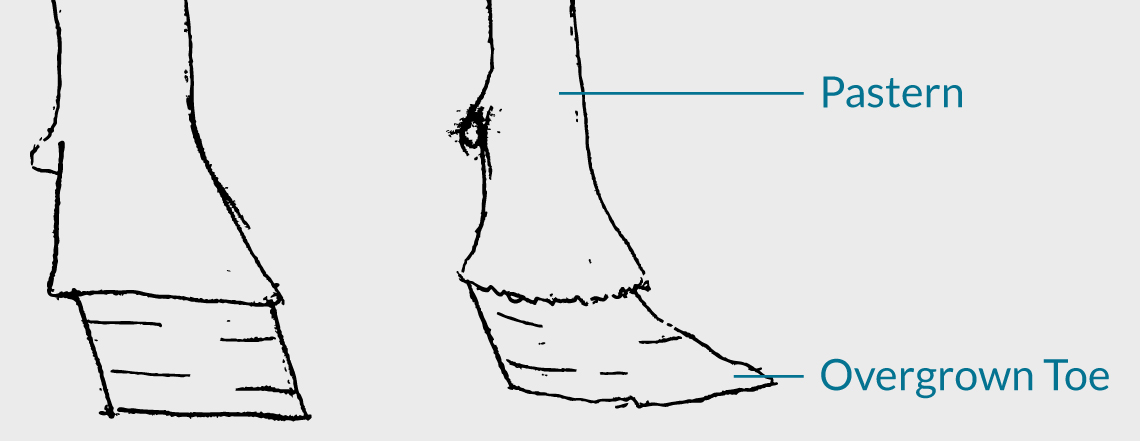
Diagram of goat hooves showing an overgrown hoof with an elongated toe that puts stress on pasterns and knees compared to a correctly maintained hoof where the floor of the hoof is paralell with the top of the hoof wall.
Step 2: Clean the Hooves
Now that you’ve got your goat restrained, hung, or held; use a hoof pick (or, if you’re me, the point of the hoof trimmer blade) to scoop out and scrape off any dirt, manure, or debris from the hoof. This will make it easier to see the hoof’s structure, how high the side wall has grown past the sole, and ensure that you don’t accidentally cut too much of the hoof. It’ll also help keep your clippers sharp, as my husband likes to remind me while he’s sharpening our trimmers for the umpteenth time.
Step 3: Trim the Hoof
Start by trimming off the excess growth at the front of the hoof (the toe). Depending on how frequently your goat’s hooves are trimmed, the hooves may not be very overgrown or extended at the front. Next, I like to trim the sides or hoof walls down to be level with the sole. Your goal is to trim evenly, so that the finished hoof will have your goat standing properly, levelly, and with the proper angulation as shown in the diagram, with the heel level with the toe.
As you get closer to the sole, be careful not to cut too deeply. It’s important to avoid cutting blood supply of the hoof, which is the live tissue inside the hoof. If you begin cutting into the sole, you’ll see that the outer tissue is white; but as you cut deeper, you’ll begin to reveal pinker tissue. This means you should stop trimming, as you are getting close blood supply which will bleed if it is cut. If you do accidentally cut into it, you can apply styptic powder or cornstarch to the area to stop the bleeding.
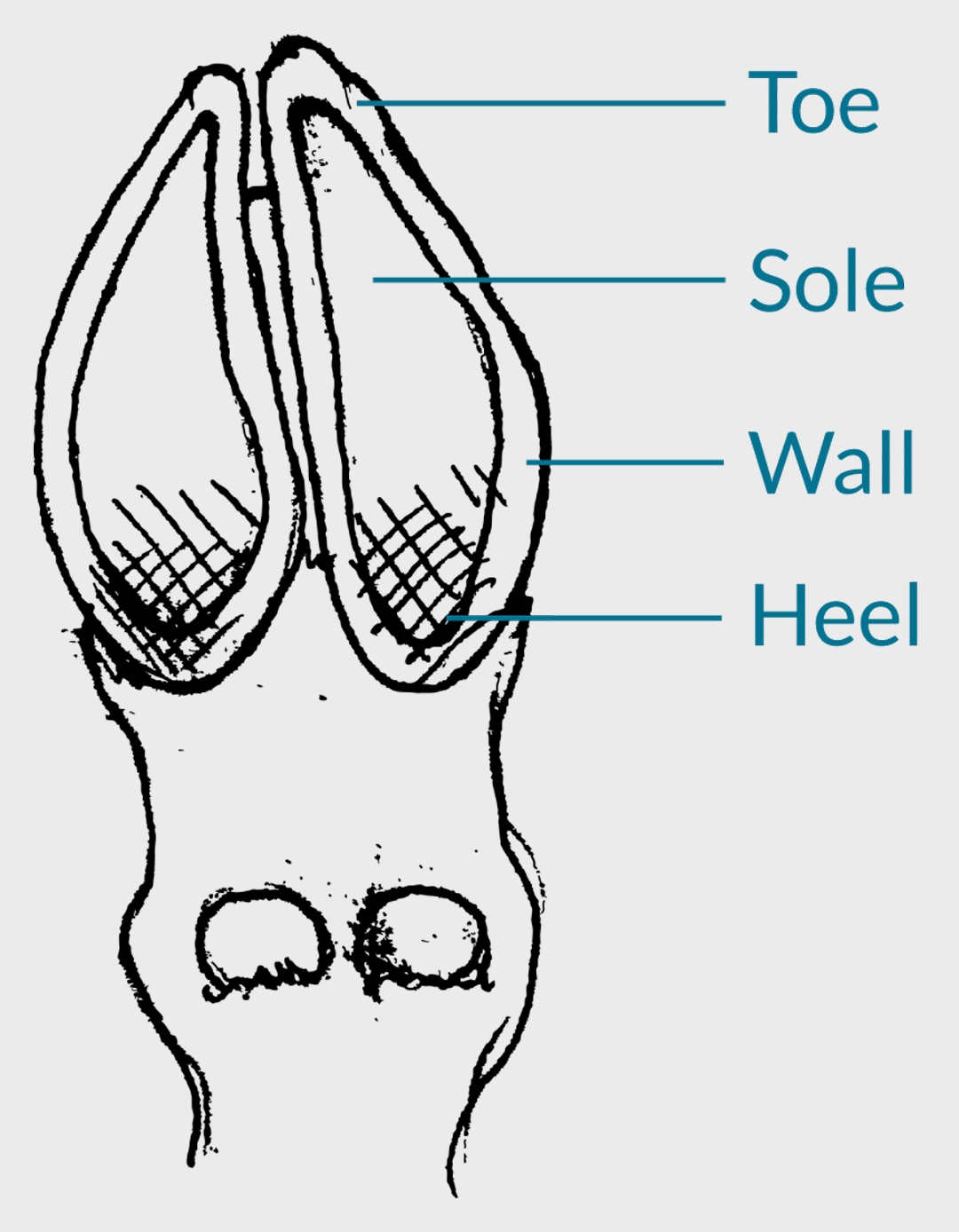
Diagram showing the underside of a properly trimmed goat hoof.
Step 4: Monitor and Maintain
After trimming your goat’s hooves, monitor them regularly to ensure they’re growing evenly. If you are unsure how often you’ll need to maintain your goat’s hooves, start by checking them every 6 to 8 weeks.
How frequently you’ll need to trim will depend on several factors including the age of your goat, the barn flooring, and what play structures the goat has access too. We find that our bucks – who have access to a rock hill – hardly need to be trimmed more than once a year. If your goat space doesn’t have rocky or cement surfaces for them to play on, consider adding some! Not only do goats prefer to stand on hard surfaces; but their legs and hooves will stay in better condition and their curious and clever personalities will benefit significantly from the habitat enrichment.
In conclusion, trimming goat hooves with clippers is a straightforward task that you’ll be able to do yourself for your goats. Restrain your goats so that you’ll be able to access their hooves easily, and be sure to trim evenly and avoid cutting the blood supply in the sole. Trim regularly and consider adding surfaces to their area that will aid in maintaining strong legs and healthy hooves.

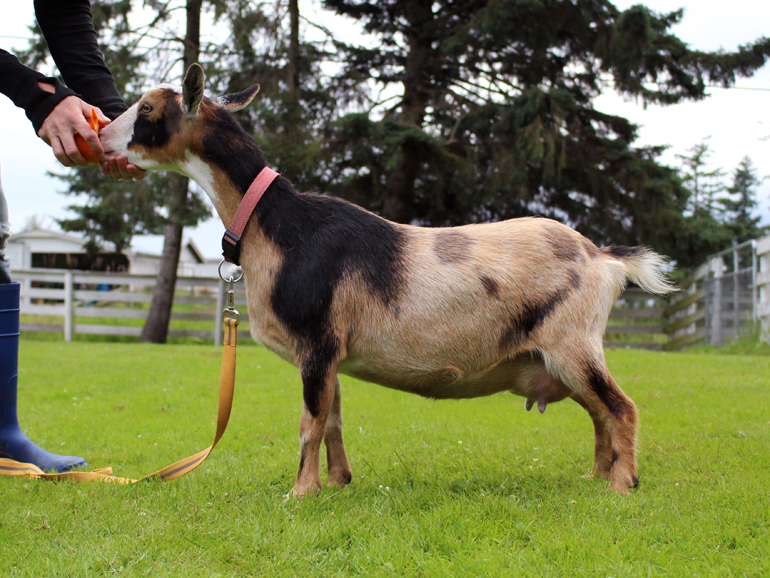
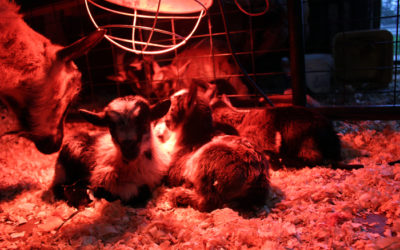

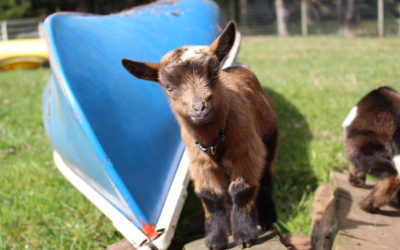
0 Comments